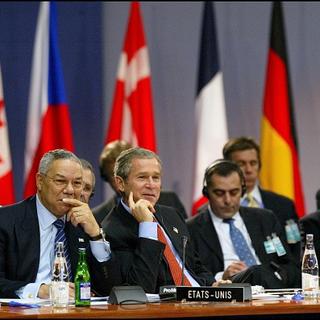


How the US divided Europe to invade Iraq at any cost in 2003
Investigation'The Transatlantic Divorce' (1/5). In the aftermath of September 11, American neoconservatives made plans to attack Iraq, despite opposition from France and Germany. From then on, to achieve its aims, the White House relied on its allies in Eastern Europe, dividing the European family for years to come.
In the Old Town of Vilnius, on Didzioji street, a wrought-iron balcony sits atop the façade of an elegant little 17th-century palace, now converted into a five-star hotel, the Hotel Pacai. It was from this balcony that Napoleon addressed the people of the capital of the Grand Duchy of Lithuania in June 1812, after seizing the city from the army of Tsar Alexander I. In the city, his soldiers were welcomed as liberators.
Napoleon's brief but significant stay in Vilnius marked the beginning of what local historians call the "French period" – tragically followed by the retreat from Russia and the resulting carnage. In the Vilnius region alone, nearly 37,000 soldiers and officers of the Grande Armée died from cold, hunger or disease during the winter.
It then took a little more than two centuries for France to regain the favor of Lithuanians, according to Zygimantas Pavilionis, a 53-year-old MP and chair of the Foreign Affairs Committee in the parliament of the small Baltic republic. Over coffee, Pavilionis recounted the episode of Napoleon on the balcony, and set the date of France's return to grace at 2020, when President Emmanuel Macron visited Vilnius and met with Sviatlana Tsikhanouskaya, whose husband is imprisoned in neighboring Belarus for attempting to run in the presidential election. "At last," he said with satisfaction, "France, with this gesture, reconnected with its revolutionary calling, after having swallowed so many bitter pills."
Another purpose in mind
You have 93.44% of this article left to read. The rest is for subscribers only.
